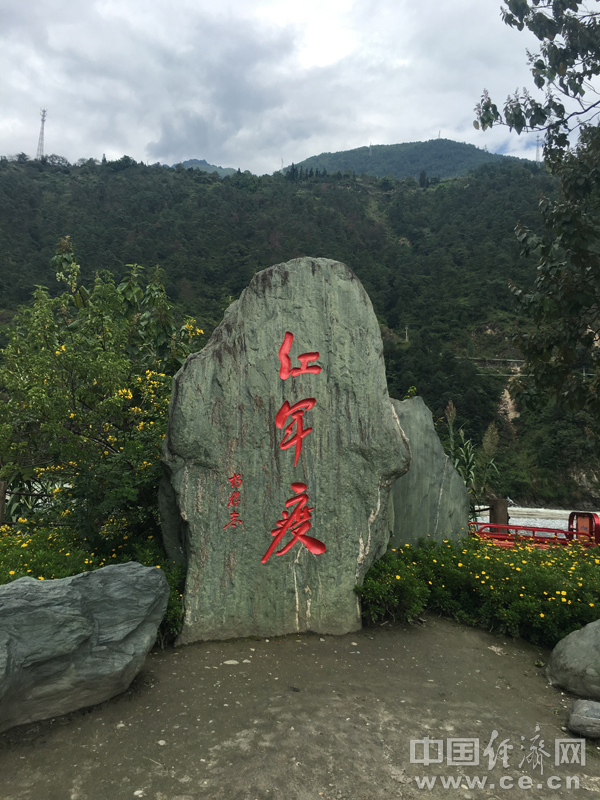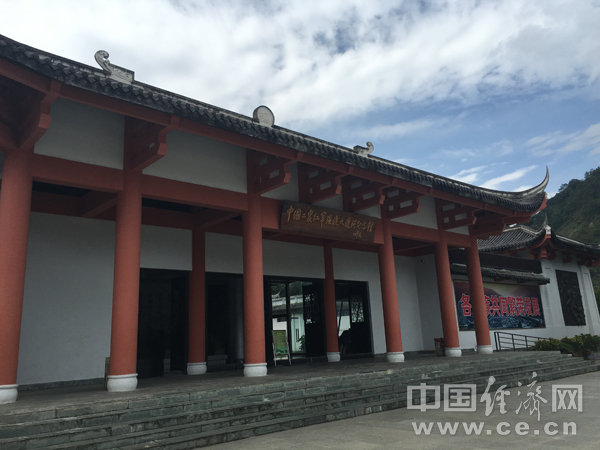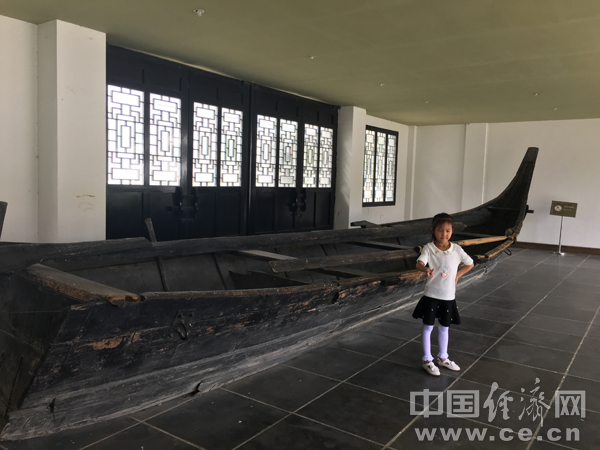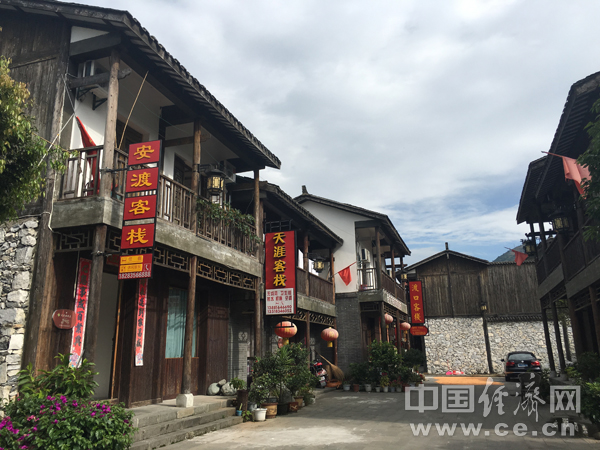[Online media "changed"] An Shunchang: The victory field of the Red Army in those days is now well-off.
Anshunchang, which is famous at home and abroad for its "Wing King Tragedy, Red Army Victory Field", is a revolutionary memorial site for the victory of the Chinese Workers and Peasants Red Army in crossing the Dadu River. It is the first batch of 100 red tourist attractions and one of 30 boutique routes in China, and the only red tourist attraction in the country with sadness as a backdrop. Today, the large-scale theme interview activity (Sichuan Station) of the online media "Running for a Well-off Society on the Long March" was officially launched. The interview group came to Anshunchang, a famous memorial site for the victory of the revolution, to explore the footprints of the Red Army during the Long March.
Anshun field, formerly known as Zidadi, is located on the south bank of the middle reaches of Dadu River in southwest Sichuan Province, 11 kilometers away from Shimian County. In May 1935, the Chinese Red Army of Workers and Peasants successfully crossed the Dadu River here, crushing Chiang Kai-shek’s dream of making Zhu Mao the second in Shi Dakai. The command building of the Chinese Workers and Peasants Red Army crossing the Dadu River played a decisive role in the Red Army crossing the Dadu River. Historians say: "Without the victory of crossing the Dadu River, there would be no victory of the Long March of the Chinese Workers and Peasants Red Army, and there would be no new China today".

The Red Army forcibly crossed the site of Dadu River ferry. In 1935, the Red Army forced the crossing of the Dadu River, and the Chinese Red Army of Workers and Peasants won the Anshun Field and forced the crossing of the Dadu River, crushing Chiang Kai-shek’s attempt to make the Red Army the second in Shi Dakai. Now it is a state-level cultural relics protection unit. China Economic Net reporter Ma Changyan photo

The Red Army crossed the Dadu River Monument. In 1982, Shimian County People’s Government built a granite carving monument at Anshunchang Ferry. The monument is 6.26 meters high, carved from gray granite, with the inscription "Monument of Chinese Red Army of Workers and Peasants Crossing the Dadu River" inscribed by Comrade Deng Xiaoping. Below it is the relief of seventeen warriors riding a local unique wooden boat to cross the natural barrier, on the right is the relief of a giant holding a broadsword, and on the front is the head of a Red Army soldier carved in a semicircle. China Economic Net reporter Ma Changyan photo

The Red Army crossed the Dadu River Command Building. It is a three-storey Tibetan carved building with a history of nearly a hundred years. When the Red Army crossed the Dadu River, this small wooden and stone building was the command building, which commanded this battle of great historical significance and made great contributions. It still stands in Anshunchang Old Street, which seems to tell the world about that thrilling history. China Economic Net reporter Ma Changyan photo

The Red Army crossed the Dadu River Memorial Hall. The memorial hall was completed and put into use on December 5, 2003, with the Tang style, symmetrical layout and courtyard form, with a total area of 6,600 square meters, of which the memorial hall covers an area of 2,600 square meters, with a total investment of 4.09 million yuan. With the theme of carrying forward the spirit of the Red Army, the exhibition hall is divided into five parts: the Long March, the Battle of Dadu River, the Red Army’s Long March over Anya, the elegy of Wing King, and historical review. It has a collection of 228 pieces, including 73 objects and 155 pictures. China Economic Net reporter Ma Changyan photo

Red army ship. In May 1935, 77 boatmen relied on three such wooden boats to transport more than 8,000 Red Army soldiers across the rushing Dadu River in seven days and seven nights. China Economic Net reporter Ma Changyan photo
Today, Anshunchang is a national key cultural relics protection unit. In 1996, Anshunchang was officially named as the patriotic education base in Sichuan Province and one hundred patriotic education bases for primary and middle school students in China. In May, 2004, the Memorial Hall of the Chinese Workers and Peasants Red Army crossing the Dadu River, which was inscribed by Jiang Zemin himself, was built. The museum is located in the north of Anshun Field, together with the monument in the planned ruins park. More than 200 cultural relics are preserved in the museum, which is really precious. On June 1, 2013, it successfully passed the acceptance of the national expert group of national AAAA-level tourist attractions.
While remembering the revolutionary ancestors, the descendants of Anshunchang continued to carry forward the spirit of the Long March by developing productive forces. Shi Xia, head of Anshun Yi people’s township, told reporters that their thinking on the road to a well-off society is: taking poverty alleviation and development as the main line, expanding characteristic industries and promoting farmers to increase production and income; Based on the orientation of strengthening the countryside by industry, accelerate the transformation and upgrading, and enhance the comprehensive competitiveness of the rural economy; Consolidate the achievements of post-disaster reconstruction, strengthen the management of new villages, and strive to create beautiful new villages after the disaster.
Take Xinchang village as an example. Xinchang village is located in the southwest of Shimian county, 15 kilometers away from the county, with an area of 22.4 square kilometers and an average elevation of 1450 meters. There are 9 villagers’ groups with 546 households and 1,720 people, of whom ethnic minorities account for 29.4%. It is a typical poverty-stricken village of ethnic minorities in the middle and high mountains, with harsh natural conditions, backward infrastructure, generally low income of the people and backward concepts. The Yi people have long lived in a state of mixed people and animals and no toilets. At the same time, Xinchang village is also the coverage area of the red tourism ring road in the old revolutionary base area, and it is one of the seven rivers in the Republic of China; In 1935, the Long March of the Central Red Army passed by.
In recent years, Xinchang Village has been striving for "4" around the goal of building a "happy and beautiful demonstration village in the middle and high mountains"·20 "Lushan strong earthquake recovery and reconstruction and the" double-linked "work opportunity of the provincial party committee and government, adhere to the concept of" integration of production and village, combination of construction and reform, and equal emphasis on construction and management ",actively explore the construction mode of" one building with eight reforms "in the middle and high mountain minority areas, take the new village as an industry, promote income through industry, and strive to create a happy and beautiful new village" Xinyi Village on the Red Army Road and a happy home on the Anning Lake ".

Anshun ancient street. The ancient street mainly covers the north-south area of Anshunchang and the core area of the old street. The street is paved with bluestone slabs. The surrounding houses adopt the imitation Ming and Qing architectural style with western Sichuan characteristics, with black and white as the main tone, antique and full of charm. Being in it seems to be in the long river of history, highlighting the heavy, vicissitudes and magnificent historical and cultural charm. China Economic Net reporter Ma Changyan photo
With the great help and support of all levels and departments, Xinchang village has taken on a brand-new look, the production and living conditions of middle and high mountain minority villages have stepped over 20 years, and the village has made great progress in mental outlook, industrial development, new village management and civilized atmosphere, and has successively won the honorary titles of "Demonstration Village with Beautiful Environment in Sichuan Province" and "Happy beautiful countryside in Sichuan Province".